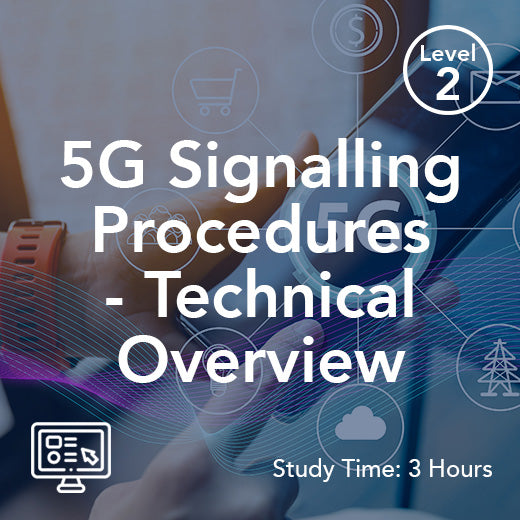Çerçeveler Arası Boşluğu Anlamak: Ağ Verimliliğine Yönelik Basit Bir Kılavuz
- , by Stephanie Burrell
- 8 min reading time
Ağ dünyasında, veri iletimi söz konusu olduğunda her saniye önemlidir ve çerçeveler arası boşluk kavramını anlamak, verimliliği korumak için çok önemlidir. Ethernet çerçeveleri ve veri paketleri arasındaki bu küçük duraklama önemsiz görünebilir, ancak ağ tıkanıklığını önlemede ve sorunsuz iletişimi sağlamada hayati bir rol oynar. Ağın genellikle göz ardı edilen bu yönünün mekanizmasını derinlemesine incelerken, genel ağ performansını nasıl etkilediğini ve hem yeni başlayanlar hem de deneyimli teknoloji meraklıları için önemini kavramanın neden önemli olduğunu ortaya çıkaracağız. Bu küçük boşluğun ağınızın işlevselliğinde nasıl büyük bir fark yaratabileceğini keşfetmeye hazır olun.
Çerçeveler Arası Boşluğa Giriş
Ağ iletişiminde, paketler arası boşluk ve çerçeveler arası boşluk kritik ancak basit kavramlardır. Veri paketlerinin ağlar arasında sorunsuz bir şekilde iletilmesini sağlarlar. Mekaniğini anlayarak, ağ tıkanıklığını önleme ve verimliliği korumadaki rolünü değerlendirebiliriz.
Kareler Arası Boşluk Nedir?
Çerçeveler arası boşluk , iletim sırasında veri paketleri arasında belirli bir uzunlukta kısa bir duraklamadır . Bu boşluk, ağ cihazlarının bir sonraki paketi işleyip hazırlamasını sağlar. Mikrosaniye cinsinden ölçülür ve her paketin uygun şekilde ayrılmasını sağlayarak çakışmayı önler. Bu boşluk olmadan, ağ cihazları aşırı yüklenebilir ve bu da veri kaybına veya hatalara yol açabilir.
İletim sırasında, kareler arası boşluk cihazlar için bir nefes alma alanı görevi görür. Tutarlı bir boşluk korunarak cihazlar daha iyi senkronize olabilir ve sorunsuz veri akışı sağlanabilir. Bu süreç, ağ kararlılığının korunması için olmazsa olmazdır.
Konsept, özellikle taşıyıcı sinyaller bağlamında basit ama etkilidir. Çerçeveler arası boşluk, veri akışını yönetmeye, tıkanıklığı önlemeye ve tüm cihazların gelen verilere hazırlanmak için zamana sahip olmasını sağlamaya yardımcı olur.
Kareler Arası Boşluğun Önemi
Çerçeveler arası boşluğun önemi, ağ verimliliğini sağlamadaki rolünde yatmaktadır. Uygun bir boşluk olmadan , ağlarda tıkanıklık yaşanabilir ve bu da gecikmelere ve veri kaybına yol açabilir. Bu boşluk, hizmet kalitesinin korunması için hayati önem taşır.
Uygun bir çerçeveler arası boşlukla, ağlar aynı anda birden fazla veri akışını işleyebilir. Bu özellik, yüksek hızlı veri iletimi gerektiren modern uygulamalar için olmazsa olmazdır.
Ayrıca, çerçeveler arası boşluk, cihazların senkronizasyonuna yardımcı olur. Her cihazın gelen verileri hatasız bir şekilde işleyebilmesini sağlar. Bu senkronizasyon, ağın genel sağlığının korunması için hayati önem taşır.
Yaygın Yanlış Anlamalar
Çerçeveler arası boşluk, özellikle iletilen baytlarla ilişkisi açısından birçok yanlış anlama barındırmaktadır. Bazıları bunun gereksiz olduğunu düşünse de, bu gerçeklerden çok uzaktır. Çerçeveler arası boşluk gereksiz değildir; ağ verimliliği için hayati önem taşır .
Bir diğer yanlış kanı da, daha kısa bir aralığın performansı iyileştirdiğidir. Ancak, aralığın azaltılması veri çakışmalarına ve hatalara yol açarak genel ağ performansını etkileyebilir.
Son olarak, bazıları çerçeveler arası boşluğun yalnızca büyük ağlar için geçerli olduğunu düşünür. Gerçekte ise, boyutları ne olursa olsun tüm ağlar, iyi korunan bir çerçeveler arası boşluktan faydalanır. Bu, güvenilir ve sorunsuz veri iletimi sağlar.
Kareler Arası Boşluk Nasıl Çalışır?
Çerçeveler arası boşluğun işleyişi, sistem içindeki zamanlama ve senkronizasyondaki rolüne dayanır. Veri akışını etkili bir şekilde yönetmek ve ağların tıkanıklık olmadan sorunsuz çalışmasını sağlamak için tasarlanmıştır.
Zamanlama ve Senkronizasyon
Çerçeveler arası boşluk için zamanlama çok önemlidir. Her paketin hassas bir zamanlamayla gönderilmesini sağlayarak cihazların etkili bir şekilde senkronize olmasını sağlar. Bu senkronizasyon, çakışmaları önler ve sorunsuz veri akışı sağlar.
Cihazlar paketleri yapılandırılmış bir şekilde gönderir.
Çerçeveler arası boşluk bir tampon zaman sağlar.
Bu tampon, cihazların bir sonraki pakete hazırlanmasını sağlar.
Senkronizasyon, ağlar için hayati önem taşır. Tüm cihazların uyum içinde çalışmasını sağlayarak hata riskini azaltır ve genel ağ performansını iyileştirir.
Etkili zamanlama ile ağlar, yüksek veri hacimlerini tıkanıklık yaşamadan işleyebilir. Çerçeveler arası boşluk, bu dengenin sağlanmasında önemli bir rol oynar.
Ağ Performansı Üzerindeki Etki
Çerçeveler arası boşluk, ağ performansını önemli ölçüde etkiler. Verilerin sorunsuz bir şekilde iletilmesini sağlayarak tıkanıklık ve hata riskini azaltır. İyi korunan bir çerçeveler arası boşluk, tutarlı bir ağ performansı sağlar .
Paketler arasında bir tampon sağlayarak, çerçeveler arası boşluk, cihazların sinyal verilerini verimli bir şekilde işlemesine olanak tanır. Bu verimlilik, akış veya oyun uygulamaları gibi büyük miktarda veri işleyen ağlar için hayati önem taşır.
Ayrıca, uygun bir çerçeveler arası boşluk, yüksek hizmet kalitesinin korunmasına yardımcı olur. Verilerin gecikmesiz iletilmesini sağlayarak kullanıcıların memnuniyetini sağlar.
Özetle, çerçeveler arası boşluk, ağ performansının korunmasında hayati bir rol oynar. Etkisi, sağladığı tutarlı ve güvenilir veri iletiminde açıkça görülür.
Veri İletimindeki Rolü
Veri iletiminde, çerçeveler arası boşluk bir düzenleyici görevi görerek veri paketlerinin düzenli bir şekilde gönderilmesini sağlar. Bu düzenleme, veri çakışmalarını önlemek ve ağ verimliliğini korumak için önemlidir.
Veri paketleri tutarlı bir aralıkla gönderilir.
Bu boşluk işleme ve hazırlamaya olanak sağlar.
Verilerin hatasız iletilmesini sağlar.
Çerçeveler arası boşluğun rolü, ağ tıkanıklığını önlemede hayati önem taşır. Tutarlı bir boşluk sağlayarak, ağlar birden fazla veri akışını sorunsuz bir şekilde işleyebilir.
Ayrıca, çerçeveler arası boşluk, yüksek veri aktarım hızlarına ulaşılmasına yardımcı olur. Verilerin verimli bir şekilde gönderilmesini sağlayarak gecikme ve hata riskini azaltır.
Çerçeveler Arası Boşluğun Teknik Yönleri
Çerçeveler arası boşluğun teknik yönlerini anlamak, özelliklerini, değişkenlik faktörlerini ve ağ ortamlarında oluşturduğu zorlukları incelemeyi içerir.
Standart Özellikler
Çerçeveler arası boşluk belirli standartlarla belirlenir. Bu standartlar, etkili veri iletimi için gereken minimum boşluğu belirler . Bu standartlara uyulması, ağ tutarlılığını sağlar.
IEEE 802.3 standardı, çerçeveler arası minimum boşluğu belirtir.
Bu fark ağ hızına bağlı olarak değişmektedir.
Bu standartlara uyum, ağ verimliliği açısından hayati önem taşımaktadır.
Bu özelliklere uyulması, ağların sorunsuz veri akışı sağlamasını mümkün kılar. Bu, veri çakışmalarının önlenmesine ve yüksek hizmet kalitesinin korunmasına yardımcı olur.
Standart özellikler, ağ yöneticilerine bir kılavuz sağlayarak ağların optimum parametreler dahilinde çalışmasını sağlar.
Değişkenlik Faktörleri
Çerçeveler arası boşluğun değişkenliğini etkileyen çeşitli faktörler vardır. Bu faktörler, doğru şekilde yönetilmezse ağ performansını etkileyebilir .
Ağ hızı: Daha hızlı ağlar daha kısa aralıklar gerektirebilir.
Cihaz işlem gücü: Daha güçlü cihazlar daha kısa aralıkları idare edebilir.
Çevresel koşullar: Girişim gibi dış etkenler boşluğu etkileyebilir.
Bu faktörleri anlamak, ağ optimizasyonu için çok önemlidir. Bu değişkenleri yöneterek ağlar, tutarlı bir çerçeveler arası boşluk sağlayarak verimli veri iletimi sağlayabilir.
Özetle, değişkenlik faktörleri, şekilde gösterilen çerçeveler arası boşlukta önemli bir rol oynar. Bu faktörlerin yönetilmesi, ağ performansının sürdürülmesi açısından önemlidir.
Teknik Zorluklar
Çerçeveler arası boşluğu yönetirken teknik zorluklar ortaya çıkar. Ağ verimliliğini sağlamak için bu zorlukların ele alınması gerekir .
Standartlara uygunluğun sağlanması.
Değişkenlik faktörlerinin yönetimi.
Beklenmeyen ağ koşullarıyla başa çıkma.
Bu zorlukların üstesinden gelmek, ağ dinamiklerinin kapsamlı bir şekilde anlaşılmasını gerektirir. Bu, tutarlı bir çerçeveler arası boşluğu korumak için düzenli izleme ve optimizasyon gerektirir.
Bu zorlukların üstesinden gelerek, ağlar sorunsuz veri iletimi sağlayabilir ve saatle senkronize, yüksek kalitede hizmet sunabilir. Ağ yöneticilerinin bu teknik yönleri yönetmede proaktif olmaları çok önemlidir.
Ağ Verimliliğini Artırma
Ağ verimliliğinin artırılması, çerçeveler arası boşluğun optimize edilmesini ve genel performansı iyileştirmek için çeşitli araç ve tekniklerin kullanılmasını içerir.
Çerçeveler Arası Boşluğu Optimize Etme
Çerçeveler arası boşluğun optimize edilmesi, ağ verimliliğini artırmak için çok önemlidir. Doğru optimizasyon, sorunsuz veri iletimi sağlar ve tıkanıklığı azaltır .
Ağ performansını düzenli olarak izleyin.
Ağ koşullarına bağlı olarak çerçeveler arası boşluğu ayarlayın.
Standart şartnamelere uygunluğun sağlanması.
Çerçeveler arası boşluğun optimize edilmesiyle, ağlar daha yüksek veri hacimlerini sorunsuz bir şekilde işleyebilir. Bu optimizasyon, yüksek hizmet kalitesinin sürdürülmesi için olmazsa olmazdır.
Özetle, çerçeveler arası boşluğun optimize edilmesi, ağ verimliliğini artırmada önemli bir adımdır. Ağların sorunsuz ve etkili bir şekilde çalışmasını sağlar.
Araçlar ve Teknikler
Çeşitli araçlar ve teknikler, çerçeveler arası boşluğun optimize edilmesine yardımcı olabilir. Bu araçlar, tutarlı ağ performansı sağlar ve veri iletimini iyileştirir .
Ağ izleme araçları: Çerçeveler arası boşluk sorunlarını belirleyin ve giderin.
Optimizasyon yazılımı: Gerçek zamanlı koşullara göre kareler arası boşluğu ayarlar.
Düzenli denetimler: Standartlara uyumu sağlayın.
Bu araçların kullanımıyla ağlar, çerçeveler arası tutarlı bir boşluk sağlayabilir. Bu, tıkanıklığın önlenmesine ve sorunsuz veri akışının sağlanmasına yardımcı olur.
Özetle, araçlar ve teknikler, çerçeveler arası boşluk optimizasyonunda hayati bir rol oynar. Ağların optimum parametreler dahilinde çalışmasını sağlayarak genel verimliliği artırırlar.
Gerçek Dünya Uygulamaları
Çerçeveler arası boşluğun çeşitli iletişim ortamlarında çeşitli gerçek dünya uygulamaları vardır. Veri iletim verimliliğini sağlamadaki rolü çeşitli senaryolarda belirgindir .
Video akışı: Yüksek kalitede, kesintisiz akış sağlar.
Çevrimiçi oyun: Düşük gecikmeyi korur ve gecikmeyi azaltır.
VoIP hizmetleri: Net ve tutarlı ses iletişimini sağlar.
Bu uygulamalarda, çerçeveler arası boşluk, hizmet kalitesinin korunmasında önemli bir rol oynar. Verilerin sorunsuz bir şekilde iletilmesini sağlayarak kesinti riskini azaltır.
Sonuç olarak, gerçek dünya uygulamaları, çerçeveler arası boşluğun önemini vurgulamaktadır. Ağ verimliliğini sağlamadaki rolü çeşitli bağlamlarda açıkça görülmektedir.
Sonuç ve Gelecek Beklentileri
Çerçeveler arası boşluk, ağ iletişiminde küçük ama önemli bir bileşendir. Geleceğe baktığımızda, rolünü anlamak ve optimize etmek, ağ teknolojisinin ilerlemesi için kilit öneme sahip olacaktır.
Önemli Noktaların Özeti
Özetle, çerçeveler arası boşluk ağ verimliliği için olmazsa olmazdır. Sorunsuz veri iletimi sağlar ve tıkanıklığı önler .
Boşluk, cihaz senkronizasyonuna olanak tanır.
Genel ağ performansını etkiler.
Boşluğun optimize edilmesi ağ verimliliğini artırır.
Bu önemli noktaları anlamak, ağ yöneticileri için hayati önem taşır. Ağların optimum parametreler dahilinde çalışmasını ve yüksek hizmet kalitesinin korunmasını sağlar.
Ortaya Çıkan Trendler
Ağ iletişiminde ortaya çıkan yeni trendler, çerçeveler arası boşluğun önemini daha da vurgulayacaktır. Ağlar geliştikçe, bu boşluğun optimize edilmesi giderek daha hayati hale gelecektir .
Artan veri talepleri: Daha fazla veri, verimli çerçeveler arası boşluk yönetimi gerektirecektir.
Gelişmiş teknolojiler: Yeni teknolojiler daha iyi optimizasyon araçları sunacak.
Ağ verimliliğine odaklanın: Bunu başarmada çerçeveler arası boşluk önemli bir rol oynayacaktır.
Bu trendler, ağ iletişiminin geleceğini şekillendirecek. Çerçeveler arası boşluğu anlamak ve optimize etmek, bu değişimlere ayak uydurmak için hayati önem taşıyacak.
Son Düşünceler
Sonuç olarak, çerçeveler arası boşluk, özellikle her istasyonun performansıyla ilişkili olarak, ağ iletişiminin hayati bir bileşenidir. Sorunsuz veri iletimini sağlamadaki rolü, ağ verimliliği açısından kritik öneme sahiptir .
Çerçeveler arası boşluğu anlamak ve optimize etmek, tıkanıklığı önleyebilir ve yüksek hizmet kalitesini koruyabilir. Ağlar geliştikçe, bu anlayış giderek daha önemli hale gelecektir.
Ağ yöneticileri, çerçeveler arası boşluğa odaklanarak ağlarının sorunsuz, verimli ve etkili bir şekilde çalışmasını sağlayabilirler. Bu, ağ performansı üzerinde büyük etkisi olan küçük bir kavramdır.
A

































